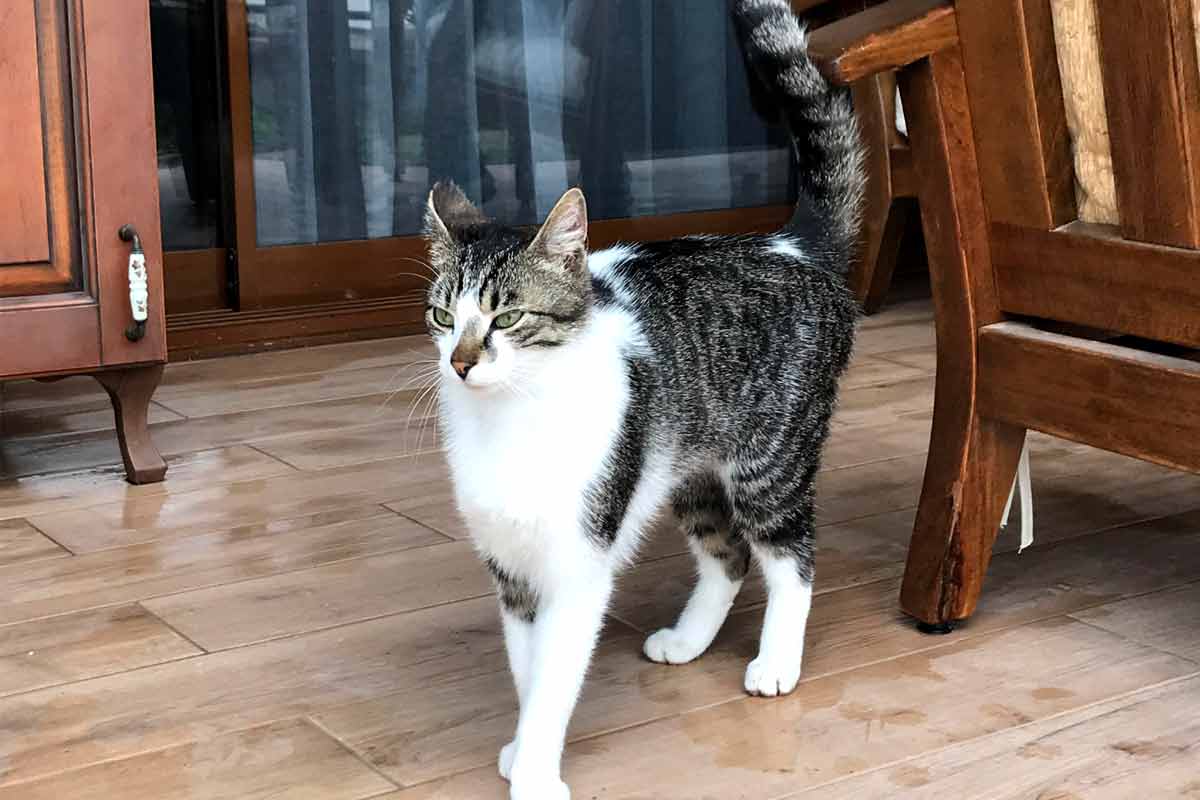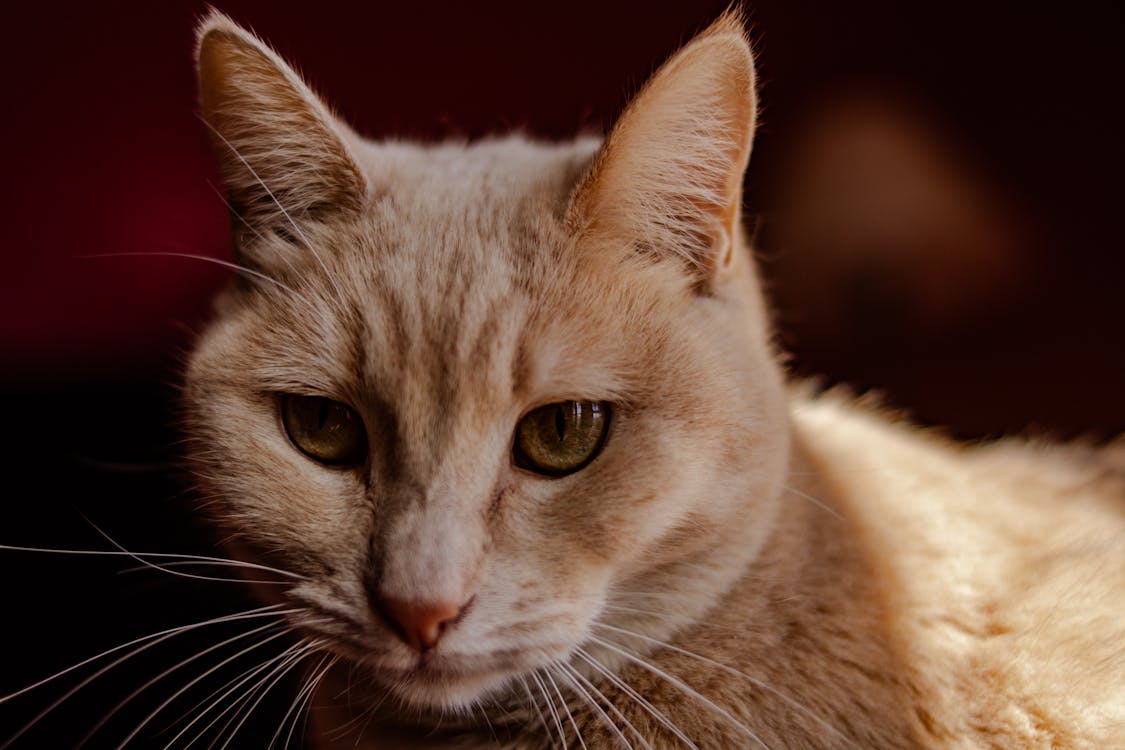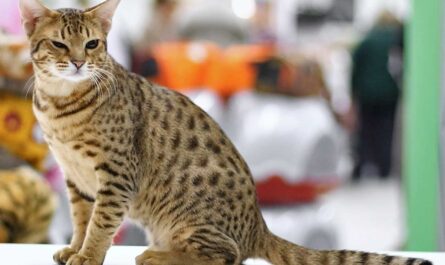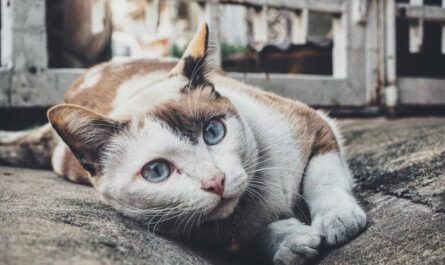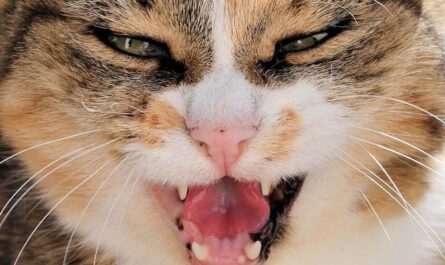Have you ever noticed your usually playful feline friend becoming a bit sluggish and less interested in their favorite toys or treats? Perhaps their once bright eyes seem a little dull for anemia in cats. These changes in behavior, while sometimes due to a passing tummy ache or a case of the zoomies wearing off, could also be signs of an underlying health condition like anemia.
This article serves as your comprehensive guide to feline anemia. We’ll explore the various causes of this blood condition, equip you with the knowledge to recognize its signs, and delve into the treatment options available. Most importantly, we’ll emphasize the importance of early detection and working collaboratively with your veterinarian to ensure your cat’s continued health and happiness.
A Breakdown: Different Types of Anemia in Cats
Just like humans, cats can experience different types of anemia, each with its own set of causes. Understanding these distinctions is crucial for proper diagnosis and treatment.
-
Regenerative Anemia: This type of anemia occurs when a cat’s bone marrow, the factory responsible for producing red blood cells, isn’t producing them quickly enough to replace those that are naturally dying off. This can happen due to various factors, which we’ll explore in more detail later.
-
Non-Regenerative Anemia: In contrast, non-regenerative anemia occurs when the bone marrow is producing red blood cells at a normal rate, but something is causing them to be destroyed prematurely. This can be due to underlying diseases or certain medications.
Knowing the difference between these two types of anemia helps veterinarians pinpoint the root cause and develop the most effective treatment plan.
Unveiling the Culprits: Common Causes of Feline Anemia
Anemia in cats can arise from various factors. Let’s explore some of the more common culprits:
-
Internal Parasites: These unwelcome guests, like fleas, roundworms, or hookworms, can steal essential nutrients from your cat’s blood, leading to anemia. Regular parasite prevention is vital in keeping your feline friend healthy.
-
Nutritional Deficiencies: A lack of essential vitamins and minerals, particularly iron and B vitamins, can hinder red blood cell production and contribute to anemia. A balanced and veterinarian-approved diet is crucial for your cat’s well-being.
-
Chronic Diseases: Certain chronic illnesses, such as kidney disease or autoimmune disorders, can impact red blood cell production or lead to premature destruction. Early detection and management of these underlying conditions are essential.
-
Viral or Bacterial Infections: Some infections can suppress the bone marrow’s ability to produce red blood cells, leading to anemia. Vaccinations and a clean living environment help protect your cat from these threats.
-
Exposure to Toxins: Ingestion of certain toxins, like lead or antifreeze, can damage red blood cells and cause anemia. Keeping your cat indoors and cat-proofing your home are important preventative measures.
If you notice any signs of anemia in your cat, it’s crucial to consult your veterinarian for a proper diagnosis and treatment plan. Early detection is key, as untreated anemia can lead to serious health complications.
The Warning Signs: Recognizing the Symptoms of Anemia
Our feline companions can’t always tell us exactly how they’re feeling, so it’s important for us, their loving caregivers, to be observant. Here are some signs of anemia in cats to watch for:
-
Lethargy and Weakness: Anemia can make your cat feel tired and sluggish. They may seem less interested in playing or engaging in their usual activities.
-
Pale Gums: Healthy cat gums should be a vibrant pink color. Pale or white gums can indicate anemia and reduced red blood cell count.
-
Loss of Appetite: Anemia can affect a cat’s energy levels and overall well-being, leading to a decreased interest in food.
-
Rapid Breathing: The body may compensate for a lack of oxygen-carrying red blood cells by breathing more rapidly.
-
Rapid Heart Rate: Similarly, the heart may beat faster to try and deliver oxygen more efficiently throughout the body.
If you observe any combination of these signs in your cat, don’t hesitate to schedule an appointment with your veterinarian. Early diagnosis and treatment are essential for a full recovery.
Understanding the Blood: A Primer on Red Blood Cells
Our feline companions are full of life and energy, always ready to chase a feathery toy or pounce on an unsuspecting sunbeam. But behind the scenes, a tiny army of red blood cells works tirelessly to fuel their playful antics. Imagine a vast network of microscopic highways coursing through your cat’s body, delivering a vital cargo – oxygen. These red blood cells are the essential couriers, ensuring every cell receives the oxygen it needs to function properly.
Let’s delve a little deeper into the fascinating world of red blood cells and understand their critical role in keeping your cat healthy and vibrant.
The Lifeblood of Your Cat: The Powerhouse of Red Blood Cells
Red blood cells, also known as erythrocytes, are the unsung heroes of the feline circulatory system. These tiny, disc-shaped champions are constantly on the move, carrying a precious payload – oxygen. They are produced in the bone marrow, a spongy tissue found in the center of some bones, and continuously circulate throughout the bloodstream. As oxygen enters the lungs from inhaled air, it binds to hemoglobin, a protein found within red blood cells. Imagine hemoglobin as tiny taxis waiting at a bus stop – they readily pick up oxygen molecules, ready to transport them to all corners of your cat’s body.
Hemoglobin and Oxygen Delivery: The Fuel for Feline Adventures
Hemoglobin is the magic ingredient that allows red blood cells to ferry oxygen. This iron-rich protein acts like a magnet, attracting oxygen molecules and holding them securely. As the red blood cells travel through the body, they deliver their oxygen cargo to various tissues and organs. These oxygen molecules are then used to generate energy, fueling your cat’s playful leaps, purrs of contentment, and even the most meticulous grooming sessions. Without a steady supply of oxygen, cells become sluggish and can’t function properly, leading to various health problems.
Anemia Defined: When the Oxygen Flow Falters
Anemia occurs when there’s a deficiency in red blood cells or hemoglobin. This can happen for various reasons, and the result is a reduced ability of the blood to carry oxygen. Imagine a traffic jam on the microscopic highways – with fewer red blood cells or compromised hemoglobin function, fewer oxygen molecules can reach their destinations. This oxygen shortage can lead to a cascade of problems, affecting your cat’s energy levels, appetite, and overall well-being. The good news is that anemia can often be treated effectively with veterinary care. In the following sections, we’ll explore the signs and symptoms of anemia in cats, the different causes, and the treatment options available.
A Tale of Two Types: Exploring Regenerative vs. Non-Regenerative Anemia
Anemia in cats, while sometimes alarming, can be effectively managed with proper diagnosis and treatment. Understanding the different types of anemia allows us to delve deeper into the causes and potential solutions. Just like Alice tumbling down the rabbit hole, we’re about to embark on a journey to explore the two main categories of feline anemia: regenerative and non-regenerative.
Regenerative Anemia: When the Body Struggles to Produce
Regenerative anemia, as the name suggests, occurs when your cat’s bone marrow isn’t producing enough red blood cells. Imagine a bustling factory responsible for building essential components. In regenerative anemia, this factory is struggling to keep up with production demands. Several factors can contribute to this slowdown:
-
Nutritional Deficiencies: Just like humans, cats need a balanced diet to function optimally. Deficiencies in essential vitamins, particularly iron, vitamin B12, and folate, can hinder red blood cell production. Think of these vitamins and minerals as the building blocks for healthy red blood cells. Without enough raw materials, the factory struggles to produce them.
-
Chronic Diseases: Certain underlying health conditions, such as kidney disease or inflammatory bowel disease, can also impact red blood cell production. Chronic illnesses can be like a gremlin in the machinery, throwing a wrench into the delicate production process.
-
Parasites: Internal parasites, like hookworms or tapeworms, can steal essential nutrients from your cat’s system, indirectly affecting red blood cell production. Imagine these uninvited guests siphoning off the resources needed to build a healthy workforce of red blood cells.
-
Bone Marrow Issues: In some cases, problems within the bone marrow itself, such as tumors or infections, can directly impede red blood cell production. Think of the bone marrow as the factory floor – if it’s damaged or compromised, production inevitably suffers.
The good news is that regenerative anemia often responds well to treatment. By addressing the underlying cause, such as a vitamin deficiency or a chronic illness, we can help stimulate the bone marrow and get that red blood cell production line humming again.
Non-Regenerative Anemia: A Battle Within
Non-regenerative anemia presents a different scenario. Here, the bone marrow might be producing red blood cells at a normal rate, but the problem lies elsewhere. Imagine the factory is working diligently, but the finished product (red blood cells) is being destroyed or lost faster than it can be replaced. There are two main culprits behind this imbalance:
-
Immune-Mediated Hemolytic Anemia (IMHA): In this condition, the body’s own immune system mistakenly identifies healthy red blood cells as invaders and destroys them. Think of a case of mistaken identity – the body’s security system is overzealous and eliminating innocent red blood cells!
-
Blood Loss: Significant blood loss, whether due to an injury, internal bleeding, or a parasite infestation, can rapidly deplete the body’s red blood cell count. Imagine the factory is working hard, but there’s a constant leak in the system, draining away the finished product.
Non-regenerative anemia can be more challenging to manage, as it requires addressing the underlying cause of the red blood cell destruction or loss. However, with prompt diagnosis and veterinary intervention, the outcome can still be very positive.
Understanding the Difference: A Key to Effective Care
Differentiating between regenerative and non-regenerative anemia is crucial for guiding diagnosis and treatment. Veterinarians will employ various tools, including blood tests and examinations, to determine the type of anemia your cat is experiencing. Understanding the distinction is like having two different maps – one leads you to the factory to fix production issues, while the other helps locate the leak and stop the red blood cell loss.
By exploring the different types of anemia, we gain valuable insights. The next section will delve into the signs and symptoms that might indicate your cat is struggling with this condition.
Unveiling the Culprits: Common Causes of Feline Anemia
Just like us humans, our feline companions can also be affected by anemia, a condition where their bodies don’t have enough healthy red blood cells circulating in the bloodstream. Red blood cells are the little superheroes of the body’s transportation system, carrying vital oxygen throughout to keep everything functioning properly. When there’s a shortage of these red blood cell warriors, our furry friends might start feeling under the weather.
There are several culprits behind feline anemia, and understanding the cause is key to getting your cat back on the path to purring health. Let’s delve into some of the most common reasons why a cat might develop anemia:
Blood Loss: When the Body Leaks Its Precious Cargo
One major cause of anemia in cats is blood loss. Imagine a leaky bucket – the essential red blood cells are the water, and the bucket itself is your cat’s circulatory system. If there’s a tear in the bucket, the precious cargo (red blood cells) keeps leaking out, leading to a shortage. Blood loss can be either internal or external:
-
Internal Bleeding: This can happen due to various reasons, like ulcers in the stomach or intestines, injuries to internal organs caused by trauma, or even parasites like hookworms that attach to the intestinal lining and feed on blood.
-
External Bleeding: This is more straightforward – a wound, scrape, or any kind of injury that causes your cat to lose blood externally can contribute to anemia, especially if the bleeding is significant.
If you notice any signs of blood loss in your cat, like pale gums, weakness, or blood in their stool or vomit, it’s crucial to seek veterinary attention immediately. Early diagnosis and treatment of the underlying cause of bleeding are essential for your cat’s recovery.
Nutritional Deficiencies: When the Body Runs Low on Building Blocks
Just like we need a balanced diet to stay healthy, so do our feline companions. Deficiencies in certain essential nutrients can hinder the production of red blood cells, leading to a type of anemia called regenerative anemia. Here are some key nutrients to keep in mind:
-
Iron: Iron is a vital building block for hemoglobin, the protein in red blood cells that carries oxygen. A lack of iron in a cat’s diet can significantly impact red blood cell production.
-
Vitamin B12 and Folate: These B vitamins play a crucial role in red blood cell development. Deficiencies in these vitamins can lead to the production of abnormal, fragile red blood cells that don’t function properly.
Kittens and cats with inadequate dietary intake or those on restricted diets for other health conditions are more prone to nutritional deficiencies. If you suspect your cat might have a dietary deficiency, consult your veterinarian about adjusting their diet or introducing supplements to ensure they’re getting all the essential nutrients they need to stay healthy.
Chronic Diseases: When Battles Within Take a Toll
Sometimes, underlying chronic diseases can also contribute to anemia in cats. These chronic conditions can place a strain on the body’s resources, impacting red blood cell production in different ways:
-
Kidney Failure: Healthy kidneys play a vital role in stimulating the production of red blood cells. When kidneys malfunction as in kidney failure, this essential function can be compromised, leading to anemia.
-
Inflammatory Bowel Disease (IBD): This chronic inflammatory condition affecting the intestines can interfere with the absorption of essential nutrients, including iron and B vitamins, necessary for red blood cell production.
-
Cancer: Certain types of cancer can affect the bone marrow, which is the factory responsible for producing red blood cells. Cancerous cells can crowd out healthy cells in the bone marrow, leading to a decrease in red blood cell production.
If your cat is diagnosed with a chronic illness, regular veterinary checkups and proper management of the underlying condition are crucial. Early detection and treatment of chronic diseases can help prevent or minimize the development of anemia.
Here’s a quick note: This section has covered just a few of the most common causes of feline anemia. Other factors can contribute to this condition, so it’s important to consult your veterinarian for a proper diagnosis and treatment plan specific to your cat’s situation.
Final thought: A Partner in Health
Early detection and treatment are crucial for optimal feline health when it comes to anemia. The sooner you recognize the signs and seek veterinary guidance, the quicker your cat can begin their journey to recovery. Remember, working collaboratively with your veterinarian is key. They possess the expertise to diagnose the underlying cause of your cat’s anemia and recommend the most appropriate treatment plan. Cat accessories on Amazon
Throughout your cat’s recovery journey, providing them with a loving and supportive environment is vital. Maintain a consistent feeding schedule, offer plenty of fresh water, and create a calm and comfortable space for them to rest. As your cat recovers and regains their strength, witnessing their playful spirit return can be a truly heartwarming experience, strengthening the bond you share.
Taking a proactive approach to your cat’s health is the ultimate act of love. Regular veterinary checkups, a balanced diet, and a parasite prevention plan can significantly reduce your cat’s risk of developing anemia and other health concerns. By prioritizing preventive measures, you empower your feline friend to live a long, happy, and healthy life by your side. So, arm yourself with knowledge, embrace early detection, and watch your furry companion continue to bring joy and purrs into your life for years to come.
Other Interesting Articles
- How To Take Care of A Baby Kitten 2 Weeks Old: 6-Step Guide
- 20 Famous People and Legends Who Loved & Had Pet Cats
- How To Tell If A Cat is Male/Boy or Female/Girl: Tips, Guide
- A Guide to Socializing Shy, Frightened, or Traumatized Cats
- How to Stop A Cat From Spraying Indoors: Home Remedies
- How to Help Cats Get Along with a Kitten Step-By-Step
- How To Tell If Your Cat Has A Triple Coat: 7 Simple Steps
- How To Tell If Your Cat Has Down Syndrome: Signs & Myths
- 11 Signs Your Cat is a Girl: Tips To Distinguish A Female Cat
- Petting A Shy Cat: A How-To Guide, Tips, Dos, Don’ts, FAQs
- How To Tell If Your Cat Has Fleas: Best Tips To Take Care
- How To Tell If Your Cat Can’t Hear: 10 Tips To Help A Deaf Cat
- Why is My Cat Making A Weird Vibrating Noise: What To Do
- How To Tell If A Shy Cat Likes You: 14 Signs To Observe
- How To Stop A Cat From Spraying Outside: 20 Tips To Try
- How To Tell If My Cat is in Pain After Surgery: 17 Implied Signs
- How to Take Care of A Kitten For the First Time: 20 Tips
- 20 Prohibited Things You Should NEVER Do To Your Pet Cat
- What to Know Before Getting a Second Cat: Tips & Guide
- What Scents and Smells Do Cats Hate? How To Deal With
